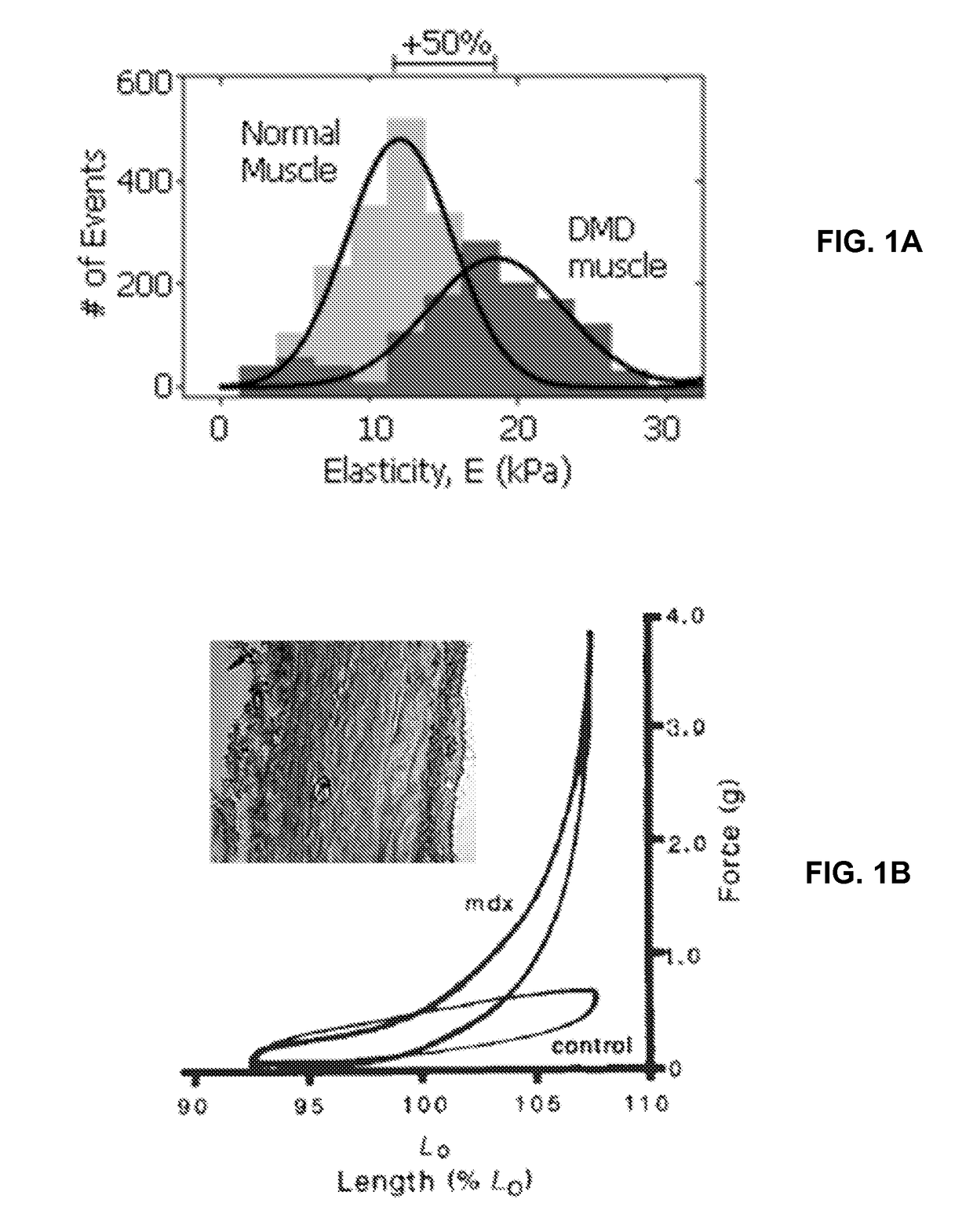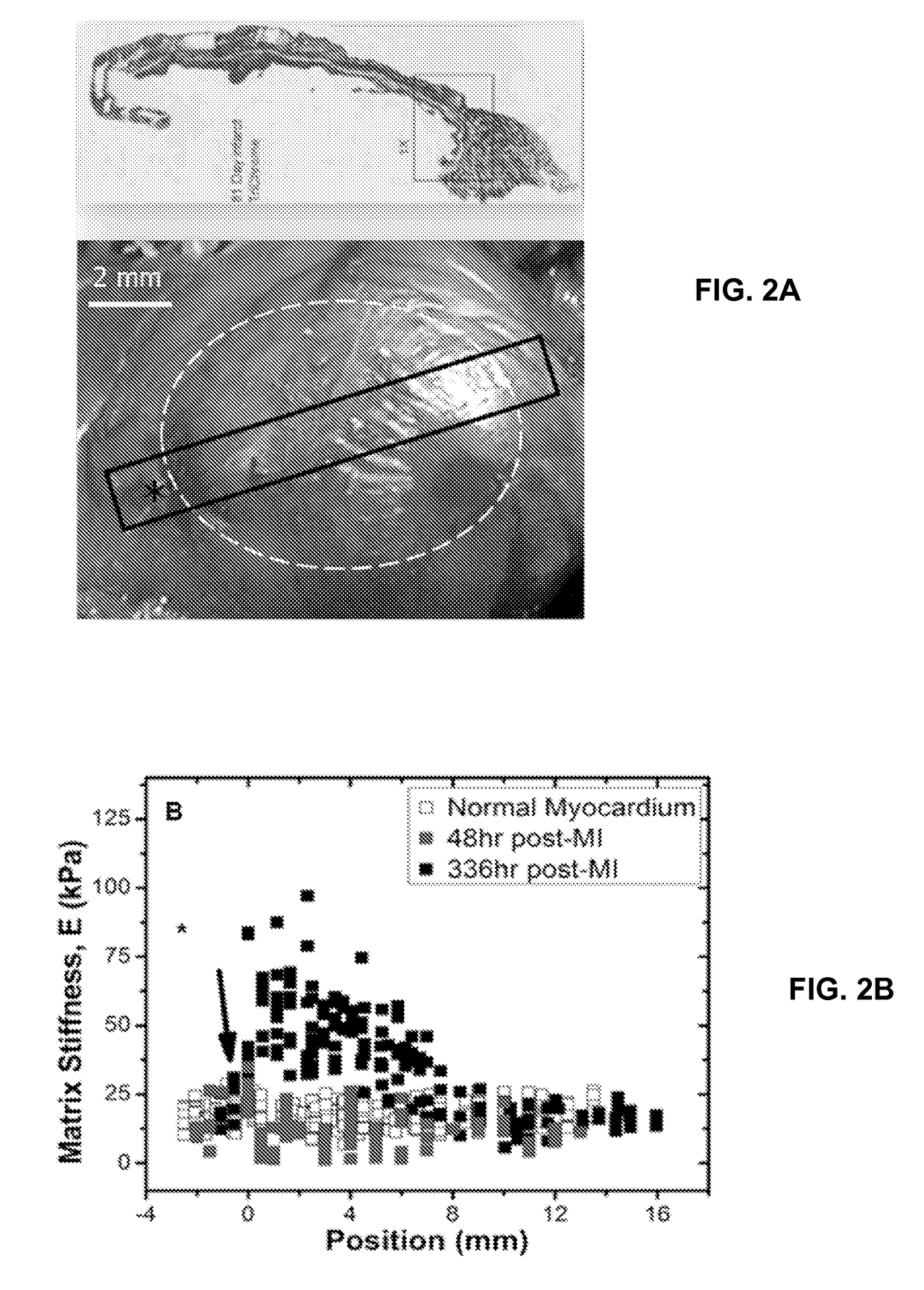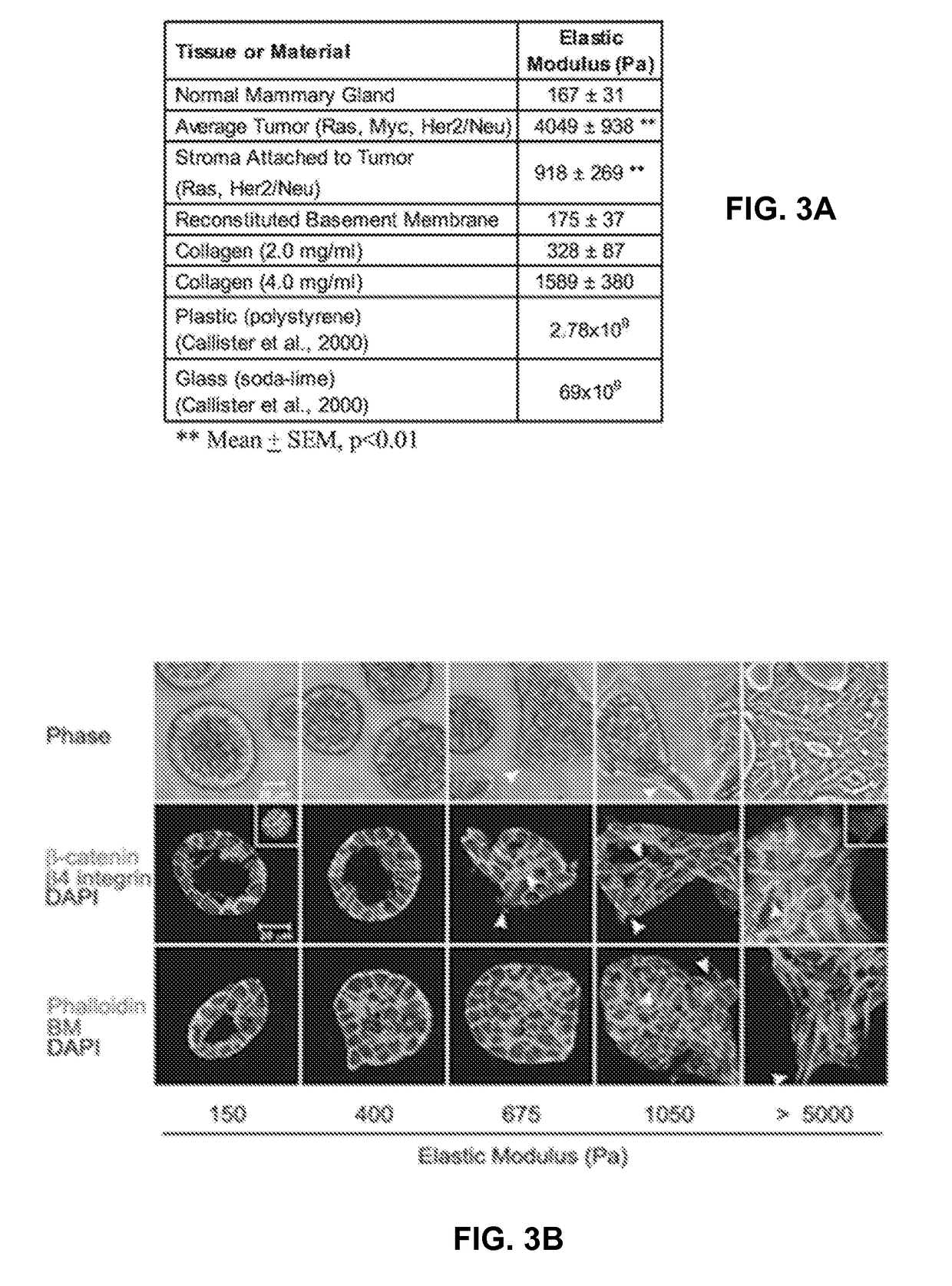Systems and methods of disease modeling using static and time-dependent hydrogels
- Summary
- Abstract
- Description
- Claims
- Application Information
AI Technical Summary
Benefits of technology
Problems solved by technology
Method used
Image
Examples
example 1
Polyacrylamide (PA) Hydrogel as a Static Substrate
[0070]PA gels are produced in this protocol by mixing various acrylamide and bis-acrylamide concentrations and inducing free radical polymerization. PA gel modulus of elasticity was quantified using atomic force microscopy (AFM), which is a nano-indentation method of calculating elasticity. This technique has been extensively detailed elsewhere (Rotsch et al., 1999; Rotsch and Radmacher, 2000).
[0071]Details of the PA hydrogel fabrication can be found in Tse and Engler, “Preparation of Hydrogel Substrates with Tunable Mechanical Properties,” Current Protocols in Cell Biology (2010), incorporated herein by reference.
[0072]Materials used are: 0.1 M NaOH; Distilled H2O; 3-Aminopropyltriethoxysilane (APES); 0.5% (v / v) glutaraldehyde in phosphate-buffered saline (PBS; Cellgro, cat. no. 46-013-CM); Dichlorodimethylsilane (DCDMS); 40% (w / v) acrylamide stock solution (Sigma-Aldrich, cat. no. A4058); 2% (w / v) bis-acrylamide stock solution (Sig...
example 2
Thiolated-Hyaluronic Acid (HA) Hydrogel as a Dynamic Substrate
[0075]The detailed methods for the HA hydrogels have been published for type one in Young and Engler. “Hydrogels with time-dependent material properties enhance cardiomyocyte differentiation in vitro,” Biomaterials (2011). Briefly, Hyaluronic Acid (HA) was obtained from Calbiotech (CA) and thiolated using a cleavable, carbohydrate selective, sulfhydryl-reactive crosslinker, PDPH (3-[2-Pyridyldithio]propionyl hydrazide) (Thermo Scientific-Pierce), MES Buffer (Thermo Scientific-Pierce), DMSO (Sigma), EDC (1-ethyl-3-[3-dimentylaminopropyl] carbodiimide hydrochloride) (Sigma), and DTT (dithiothreitol, Sigma). Alternatively, thiolated HA of similar functionality was also obtained from Glycosan Biosystems (UT). Poly(ethylene glycol) diacrylate (PEGDA) of different molecular weight was used as a crosslinker (Mw˜3400 Da from Glycosan Biosystems, UT and Mw˜258, 700 and 2000 Da from Sigma). For protein attachment on gels, EDC, NHS ...
example 3
Mimicking Fibrotic Stiffening Associated with Disease with Dynamic Methacrylated-Hyaluronic Acid (MeHA) Hydrogel
[0080]Genome-wide association studies have identified single nucleotide polymorphisms (SNPs) at the 9p21 gene locus as increasing the risk of coronary artery disease (CAD) and myocardial infarction susceptibility. Associations have implicated SNPs in enhancing smooth muscle cell proliferation and endothelial permeability but have not identified adverse effects in cardiomyocytes.
[0081]Using induced pluripotent stem cell-derived cardiomyocytes from patients that are homozygous risk / risk (R / R) and non-risk / non-risk (N / N) for 9p21 SNPs and either CAD positive (CAD+) or negative (CAD−), altered cardiomyocyte behavior was assessed when cultured on methacrylated-hyaluronic acid matrix (MeHA) capable of dynamically stiffening from healthy heart matrix stiffness, 11 kiloPascals (kPa), to that of fibrotic tissue, 50 kPa, to mimic the fibrotic stiffening associated with disease post-...
PUM
 Login to View More
Login to View More Abstract
Description
Claims
Application Information
 Login to View More
Login to View More - R&D
- Intellectual Property
- Life Sciences
- Materials
- Tech Scout
- Unparalleled Data Quality
- Higher Quality Content
- 60% Fewer Hallucinations
Browse by: Latest US Patents, China's latest patents, Technical Efficacy Thesaurus, Application Domain, Technology Topic, Popular Technical Reports.
© 2025 PatSnap. All rights reserved.Legal|Privacy policy|Modern Slavery Act Transparency Statement|Sitemap|About US| Contact US: help@patsnap.com



